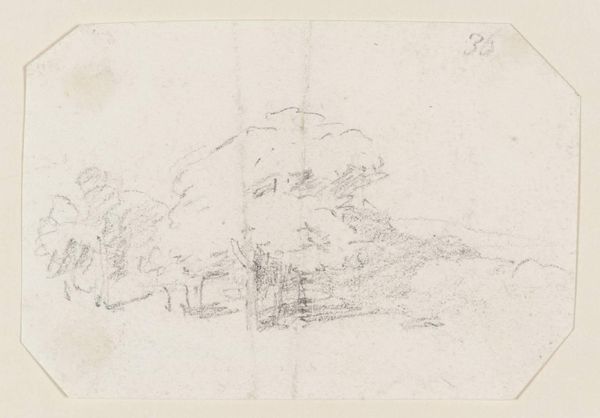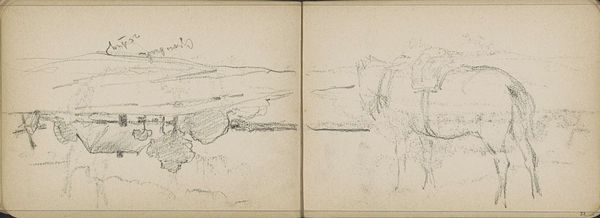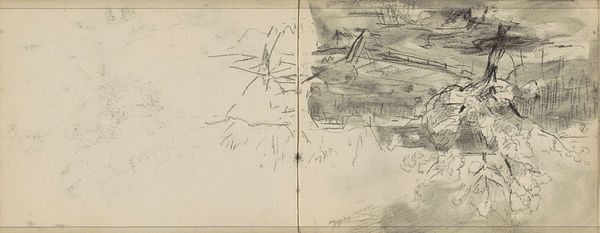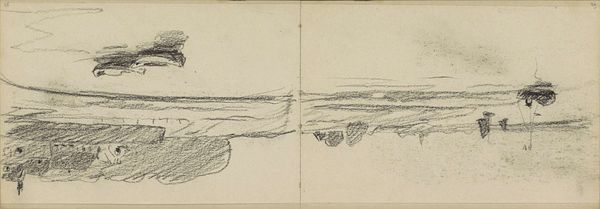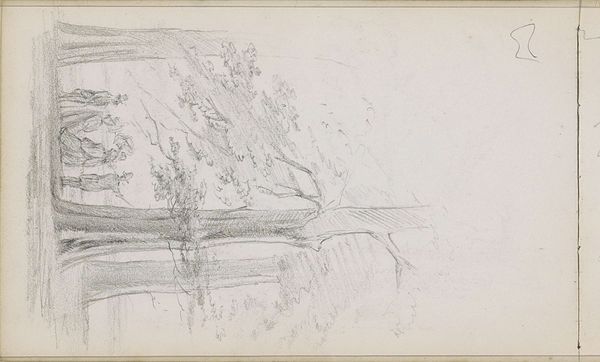
drawing, pencil
#
drawing
#
pencil sketch
#
landscape
#
pencil
#
realism
Copyright: Rijks Museum: Open Domain
Curator: Welcome. Today we’re looking at George Hendrik Breitner’s “Landschap met boerderij,” a landscape with a farm, likely created between 1883 and 1885. The artwork, rendered in pencil, captures a seemingly quiet, unassuming rural scene. Editor: You know, when I first saw it, I thought, "Hmm, ghost story prelude?" It's so wispy, like a half-formed memory of a place rather than the place itself. It's kind of brooding, even. Curator: It's interesting that you say that. Breitner, known for his depictions of Amsterdam street life, frequently explored social issues related to urban change. Consider that even in a tranquil drawing like this one, we might discern the anxieties of rural decline as industrialisation gained ground in Dutch society. Perhaps Breitner subtly expresses that tension here? Editor: Maybe, maybe not. Honestly, my brain just went straight to gothic literature. The sketchiness of it, like he caught the scene vanishing before his very eyes! Though, if we're going with anxiety... there’s definitely something uneasy about it. The way the roof looms, kinda heavy? The left side just dissolves. Feels incomplete. Curator: Exactly! Breitner's impressionistic technique does lend itself to multiple interpretations. He prioritises the impression of light and shadow. Think about how this technique shifts the artwork away from pure documentation towards capturing subjective experience and atmosphere. That would have carried some significant weight when discussions arose concerning art's social role! Editor: Right! It’s not just a farm. It’s a *mood* farm! I'm picturing this cranky old farmer in a dark cloak cursing at a storm, but also, maybe there’s something so elemental about his vision? What do you think—were people looking for social meaning or artistic experience at the time? Curator: The context certainly allowed room for both. Early Realism was about an unvarnished truth. Over time and especially with the introduction of photography, painting had to distinguish itself. A piece like this makes you consider that transition. How does capturing real life compare with evoking the sensation of real life, and for whom is this experience available? Editor: Oh, now my cranky farmer has morphed into an artistic rebel. That does make the pencil work really interesting: It's fragile, and uncertain, yet… bold? Thank you. I have to admit this has been more fulfilling than another doom and gloom scenario. Curator: Of course. Thanks to his artistry and to our capacity to pose modern questions about a fleeting artwork such as this, it becomes so much more than a sketch.
Comments
No comments
Be the first to comment and join the conversation on the ultimate creative platform.


